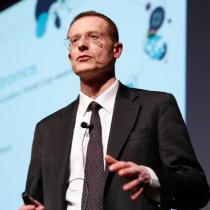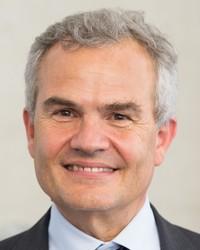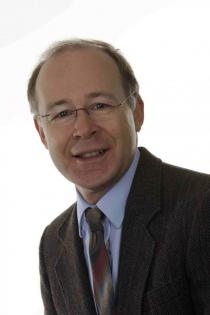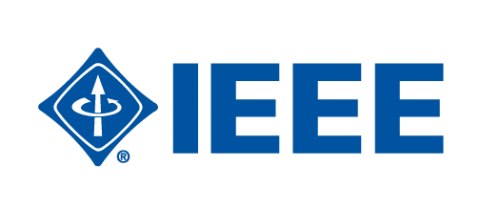Tuesday, March 27, 2018 at 9:00AM
"How high volume MEMS device manufacturers can meet the requirements of different markets"
ST was at the forefront in bringing MEMS technology to the high volume consumer market. Today the Internet of Things and Smart Driving trends are creating opportunities to make existing and new devices and applications smarter through the use of intelligent connected sensing technologies. This applies to factories and workplaces, cities, homes, vehicles and all the devices that can be found there.
The latest generations of MEMS products and technologies are developed to meet the needs of consumer applications while also targeting emerging automotive and industrial applications. Targeting different markets requires manufacturers to supply sensors with different characteristics but built on the same technology platforms. One key characteristic that differs by market is the accuracy the sensor is required to meet while another key characteristic is the combination of sensing functions that a device needs to have.
This talk will address how MEMS device manufacturers can meet the varied requirements of different markets while building on the high volume manufacturing capabilities that are already in place for the consumer industry
Andrea Onetti joined STMicroelectronics as an IC designer in 1990. He later moved to Product Management and became a Division Manager responsible for the Company’s Audio products. Onetti‘s mandate was subsequently expanded to include Low-Power Analog and RF devices, and in 2016 he was appointed General Manager of ST’s MEMS Sensors Division, covering the broad portfolio of accelerometers, gyroscopes, digital compasses, inertial modules, pressure, humidity, and temperature sensors, and microphones.
Andrea Onetti was born in Pavia, Italy, in 1965, and graduated with a Degree in Microelectronics from University of Pavia.
Wednesday, March 28, 2018 at 9:00AM
"Sub-femto-g free-fall with LISA Pathfinder"
The talk will briefly review the concept of a space-borne gravitational wave (GW) detector, and of its needs of pure inertial motion (geodesic motion) of reference test-masses. It will discuss then the sub-femto-g performance demonstrated by LISA Pathfinder, ESA’s precursor to the LISA GW
detector, and its impact on LISA and on the field of gravitational missions at large.
Full Professor of Physics at the University of Trento, Italy
Head of the Laboratory for Experimental Gravitation at the Department of Physics.
Formerly:
- Co-Principal Investigator (co-PI) of the Gravitational Wave Detector AURIGA of the National Institute of Nuclear Physics (INFN) in Italy (http://www.auriga.lnl.infn.it)
- Member of the International Science Team, and co-PI of the space-borne gravitational wave detector LISA under development by the European Space Agency (ESA) and NASA (https://www.elisascience.org) [Stepped down in 2017 for conflict of interest with SPC. See below].
- Principal Investigator of LISA Pathfinder, ESA precursor to LISA operated in 2016-2017. (http://sci.esa.int/lisa-pathfinder/ )
- Vice-chancellor, University of Trento
- Chair, ESA Fundamental Physics Advisory Group.
- Member of ESA Space Science Advisory Committee.
- Wise-man on the board of Directors of the Italian Space Agency (ASI) for the revision of the agency statutes.
- Member of various advisory and review committees for ESA, INFN/CNRS, Max Planck Society, STFC...
- Visiting scholar/professor at Stanford University and UC Berkeley.
Currently:
- Member of Gravitational Wave International Committee (GWIC) of IUPAP
- Member of the Board of the Gravitational Physics section of the European Physical Society
- Chair of ESA Space Program Committee (SPC), ESA’s science program board.
- Research on space based gravitational wave detectors and on space missions in gravitational physics at large.
- More than 230 papers on refereed journals, many tens of plenary and invited talks at international conferences, mostly on gravitational wave physics.
Wednesday, March 28, 2018 at 2:00PM
"The Machine of Bohnenberger: Inertial Link between Astronomy, Navigation, and Geodesy"
The “Machine of Bohnenberger” is considered to be the first gyro with cardanic suspension. As this apparatus forms the precursor of Foucault’s Gyroscope of 1852, it rates as the ancestor of all gyroscopic instruments. Its inventor, Johann Gottlieb Friedrich Bohnenberger (1765-1831), was a professor of physics, mathematics, and astronomy at the University of Tübingen, Germany, as well as the scientific head-surveying officer of the early Kingdom of Württemberg. Being the direct counterpart of C.F. Gauß in south-west Germany, he made major contributions to introducing modern geodesy in Germany; and besides his Machine, he designed also other various physical instruments. The paper gives an overview over the initial dissemination and the further development of the Machine of Bohnenberger and outlines Bohnenberger’s scientific work and life.
Since 2003, Jörg F. Wagner is a professor at the University of Stuttgart for adaptive structures in aerospace. He serves also as senior technical advisor of the German SOFIA Institute, which is part of the NASA and DLR owned flying observatory SOFIA. Beforehand he was senior engineer and research associate at the Technical University of Hamburg-Harburg (TUHH), Germany, where he worked in the areas of aircraft systems, nonlinear dynamics and integrated navigation. Prior to joining TUHH, he was development engineer for satellite and integrated navigation at the company Aerodata Flugmesstechnik in Brunswick, Germany, from 1993 to 1997. Jörg F. Wagner graduated in Aerospace Engineering from the University of Stuttgart, Germany, in 1985, where he was also PhD student in the fields of flight mechanics and parameter identification and received his PhD in 1995.
Thursday, March 29, 2018 at 9:00AM
"HRG by SAFRAN, the game-changing technology"
Whereas the world inertial navigation community was wondering, for decades, if FOG would ultimately replace RLG, Safran is demonstrating with its HRG that technology prospective is not such an easy game. With its HRG, Safran is proving that the HRG innovative approach is a real game changer in high end navigation. This paper sums up the overall principles of HRG, how it works and its intrinsic properties. Current applications of HRG are described to illustrate how HRG benefits are capitalized in valued-added products. More prospective aspects of the HRG are also addressed with the latest tests results of performance limits exploration.
Graduated from ISAE-ENSMA (Mechanical & Aerospace Engineering), he started his career at Safan in 1986 and has been involved in different flight controls programs as system engineer or project manager. In early 90s’ he became product manager for AHRS dedicated to commercial aerospace avionics. He held then different positions in the navigation guidance and control business including Vice President Navigation for the last 15 years.
His long experience in navigation business gave him the opportunity to become familiar with most of inertial technologies (ESG, DTG, RLG, FOG, HRG, MEMS) and theirs applications (Sea, Land, Air and Space).
© Copyright 2018 IEEE – All rights reserved. Use of this website signifies your agreement to the IEEE Terms and Conditions. A not-for-profit organization, IEEE is the world's largest technical professional organization dedicated to advancing technology for the benefit of humanity.
This site is created, maintained, and managed by Conference Catalysts, LLC.
Please feel free to contact us for any assistance.






